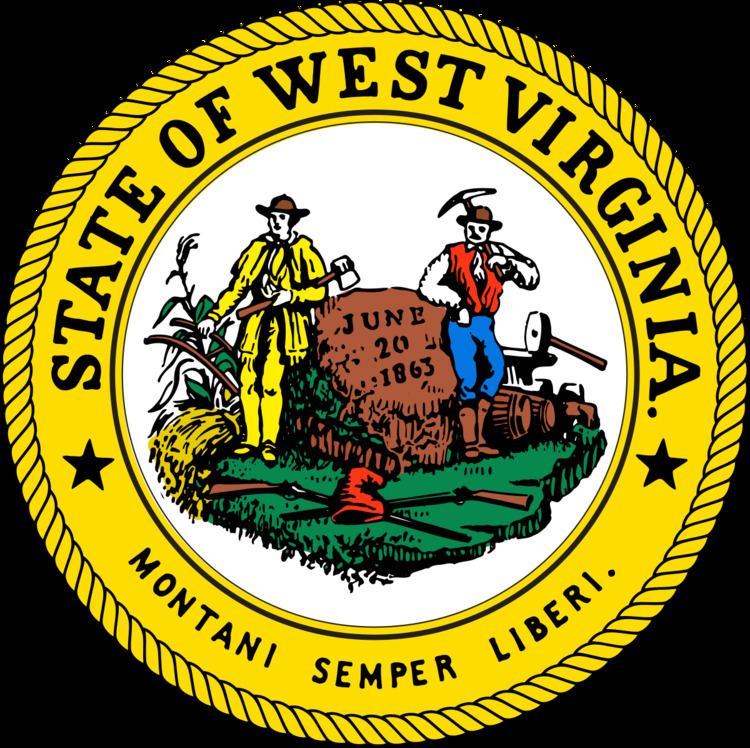Type Lower house New session started January 11, 2017 | Term limits None | |
 | ||
Speaker of the House Tim Armstead (R)Since January 14, 2015 Speaker pro tempore John Overington (R)Since January 11, 2017 Majority Leader Daryl Cowles (R)Since January 14, 2015 | ||
The West Virginia House of Delegates is the lower house of the West Virginia Legislature. Only three states—Maryland, Virginia, and West Virginia—refer to their lower house as the House of Delegates.
Contents
Organization
Regular sessions begin with an organizational day on the second Wednesday of January of each year. The length of regular session is limited to 60 calendar days. The governor can call for special sessions.
Delegates are elected for terms of two years.
Legislative process
Delegates submit bill proposals to the Office of Legislative Services or legislative staff counsel, who draft the bill. Once the bill draft is approved by the delegate, it is submitted for introduction. Bills then undergo committee review and three readings in the house of origin and then the other house of the state legislature.
An unusual feature of the West Virginia legislative process is that revenue bills can originate in either house. The state constitution also prohibits multiple subjects in a single bill.
If approved by both the West Virginia House of Delegates and the West Virginia Senate, bills are submitted to the governor, who may sign them into law or veto them. State legislators can override the governor's veto of bills with a simple majority vote of both houses, unless the bill is a revenue bill, in which case two-thirds of the members elected to each house are required to override the governor's veto or line-item veto.
83rd Legislature (2017-2018)
600px
District organization
Prior to the 1970 Census, districts always respected county lines, with districts always consisting of either a single entire county, or several entire counties. Beginning with that year, the state began to use smaller geographic areas.
The 2000 House of Delegates' districting system divided the state into 58 districts that elect a varying number of members. The majority of districts, 35, were single-member districts. 23 districts are multi-member constituencies, varying from two to seven (the 30th District in Kanawha County) delegates.
In response to the 2010 Census, the Legislature again was required to redistrict. The Republican Party, and groups from the growing eastern panhandle and Putnam County were among those calling for 100 single member districts. Eventually redistricting was adopted by House Bill 201, which divided the state into 67 districts, of which 47 are one member districts, 11 two member districts, 6 three member districts, 2 four member districts, and one five member district. The old 30th District was abolished, however the five member district, covering most of Monongalia County, remains among the ten largest multi-member lower house districts in the country. These changes took effect with the 2012 election cycle. The state Supreme Court rejected legal challenges and no federal challenge was filed.
Speaker
The Speaker of the House is selected by its members. In contrast to the tradition of the Speaker of the United States House of Representatives, the Speaker must vote unless excused. The House rules state that in some cases, he or she is not required to vote unless the House is equally divided, or unless his vote, if given to the minority, will make the division equal. In the latter case, the question is lost.
